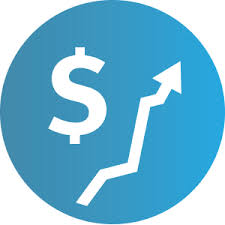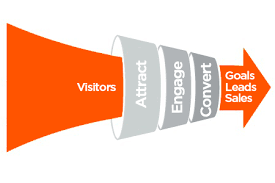In my 10 years working as a Coach, I’ve identified 5 questions that all business owners must be able to answer if they want to get more clients and increase their revenue.
1. Do you want to increase your revenue?
Sounds obvious, but it’s not. Making more money is what every business owner wants to do. But if you don’t set a specific amount, how do you know if it makes sense. In other words, how can you arrive at a number if you don’t understand the implications OF that number? For any business to grow, it must have the capacity. This means having the needed resources – personnel, equipment, inventory, etc. that you will need to produce more products or provide more services. You may not be in a position to make these investments.
Prices matter, too. What you charge for your products or services plays a big role in your revenue. Yet you cannot set your prices in an arbitrary manner due to the many forces in the mark in which you operate, many of which are beyond your control.
The point? Setting a revenue goal is a valid exercise, but the actual number is based on how your business is organized. Not only must it be achievable, it must also be realistic. And the only way you can determine that is by examining your business model.
2. Does your business model get you there?
Your business model is how you sell and set the prices for your product or service. This means what you give in exchange for what the customer pays, and at what price. There are many kinds of business models; some are designed to make it easy for a customer to buy, i.e. easy credit terms, or the opposite – where payment must be made in full to the vendor  BEFORE the customer gets the product or service. The choice you make can have a big impact on being able to pay your bills; the longer you give customers to pay, then the longer you have to wait until you get the cash from the sale. This is the basic meaning of “cash flow.” Without a predictable and regular flow of funds, you run the risk of not being able to meet your obligations.
BEFORE the customer gets the product or service. The choice you make can have a big impact on being able to pay your bills; the longer you give customers to pay, then the longer you have to wait until you get the cash from the sale. This is the basic meaning of “cash flow.” Without a predictable and regular flow of funds, you run the risk of not being able to meet your obligations.
Price. Along with the speed at which you get paid, the price your charge is another component of your business model. It can determine the volume of your sales, and who will be able to pay the price you charge. The point is that how you arrange payments and the price for your products or services affects your ability to get the money OWED you so you can pay your bills AND make a profit.
3. How did you decide which “packages” of your products or services to offer your customers?
This question is tied to question number two. Packages means the way you organize and sell your services or products. For example, you could offer to sell your powder cleanser in only groups of four cans – like Costco or any warehouse-type store does.
Done this way, Costco receives more money than they would if sold in single containers, and the customer likely gets each container at a price lower than what they’d pay for only one container. The downside for custom ers is that you HAVE to buy four, even if you only really need one. This is where packaging can really be a part of your business model, i.e. your decision to sell in this manner forces the shopper to buy more in exchange for a lower per-item price.
ers is that you HAVE to buy four, even if you only really need one. This is where packaging can really be a part of your business model, i.e. your decision to sell in this manner forces the shopper to buy more in exchange for a lower per-item price.
For services, a lawyer could choose to only work with clients by the hour, as opposed to a set price for each kind of service they offer. Why chose one over the other? Each communicates a different message to prospective clients, AND each affects how much and when you get paid. In the end, as you consider which approach to take, you must balance your desire to generate as much money as possible while – at same time – being attractive to new clients.
4. How do you decide which markets you’ll approach?
Everyone you can think of? The ones your competition is going for? I’d say NO to both. Who makes the most attractive customers? It’s those people or businesses who need or want what you have to offer. “Easy enough,” you say, “but “how do you determine need or desire?”
All of us interact with world in specific ways. Each of us has what are called “perceptual filters.” These are like lenses that we open and close in ways that produce our “world view.” It is this world view that often dictates what we think we want and what we think we need. More than demographics, these ideas are psychographic and are associated with how you feel about the world. Examples; Your religion, where you grew up, what ethnic culture you identify with. Are you a conservative, an environmentalist, a feminist, an activist? All of these descriptors produce your values, and your values play a big role in how you make decisions and what you actually do.
As values can help orient you to the influencers in peoples’ lives, so too can the distinct qualities of the product or service you sell. this is often referred to as your Unique Competitive Advantage. After fully examining your market, it’s the one thing that you do differently and/or better than your competition. It’s an advantage over competitors you gain by offering consumers greater value, either through lower prices or by providing more benefits that justify higher prices.
Why is it a big deal? It answers the question, “So what? ” Or what is the benefit to the customer, which is essential to convince someone to do business with you.
In every business, there are many ways to have a “competitive” advantage.
Examples:
Lowest Price – affordable
Convenient – sold in many places
Exclusive – only sold in one place
Quality of product – uses special material
Awards won – think beer and wine
Source of product – American vs. China, indigenous people
Expertise of the owner or staff – think chefs, beauty salons
Mission of the business – The Body Shop, Tom’s shoes, Ben and Jerry’s, Newman’s Own|
Used by a Star – Jennifer Aniston uses Aveeno, Smart Water and Living
Different packaging – the Tiffany box
Length of guarantee – 90 day vs. 3 years
Great location – easier to get to
Marketing Guru, Seth Godin, offers an eloquent reason why it’s important to appreciate peoples’ world view and the need to be specific about why what you do or make matters.
The best way to build a brand (or a company) that matters, a story that spreads, an impact that we remember, is to understand a simple but painful trade-off: If you want to stand for something, you can’t stand for everything.
“Anyone can be our customer and we will get you what you want…” is almost impossible to pull off. So is, “we are the cheapest and the most convenient and the best.”
It didn’t work for Sears, or for Chevrolet or for Radio Shack. It doesn’t work for the local freelancer, eager to do whatever is asked. Relentlessly trimming what’s on offer, combined with a resolute willingness to say, “no,” are two characteristics of great brands. And linchpins, too.
5. How much time does it take from first meeting a prospect to getting him or her to agree to work with you?
This is known as your conversion rate. It’s the amount of time you typically spend between the initial contact with a prospect and getting a signed agreement. If the conversion rate is a few days, say for someone ordering office supplies from Staples, then Staples gets the money that it’s owed very quickly, which is good for having enough funds to pay its bills.
But if the conversion rate for business consulting services, for example, is two months, then the consultant must invest much more time before he or she gets the money they are owed. This i s important because the rate determines how well your business runs.
s important because the rate determines how well your business runs.
And having ready access to cash can literally make or break a company. Why? Let’s imagine this scenario. Our same lawyer- who has a firm with two-to-three lawyers, one or two paralegals plus support staff, practice insurance, specialized research data bases. accounting services, office maintenance expenses and rent, utilities, and phone and internet services. Every item on this list represents an obligation, whether it’s to pay personnel vendors, service suppliers, or rent to their landlord. All of these people have a right to be paid in a timely manner. If the firm cannot meet its obligations by not having enough funds, i.e. CASH, it will soon be out of business. Back to the conversion rate; it is this very turn-around time that dictates when the needed funds will be available.

Challenging Questions? Yes.
If you want your business to grow,
I advise you to have answers.
